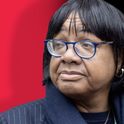This 5th November, as always, the streets of Lewes, East Sussex, will be filled with thousands of people watching the town’s bonfire societies burn effigies of the Pope and march with burning crosses. It’s the largest bonfire event in Britain’s commemoration of the Gunpowder Plot, when Guy Fawkes and his Catholic co-conspirators were foiled in their attempt to blow James I and parliament to smithereens. In other towns, those attending Guy Fawkes Night may not know why the candles are Roman and the wheels are called Catherine, mocking the Catholic saint martyred by being strapped on such a device. Nowadays municipal displays are about eating marshmallows and hot chestnuts, or banishing the darkness of the imminent winter with light and colour.
And yet a certain anti-Catholic prejudice lingers. Take a recent example from this year’s Labour Party conference in Liverpool. Andy Kerr, a Scottish party official who sits on the national executive committee, was chairing a session when he joked that he might not call a delegate to ask a question after spotting her making the sign of the cross. The incident was quickly noticed by British Catholics, and Kerr had to apologise. The location was pertinent given Liverpool’s past: Catholic children in the city used to be stoned on their way to school. And in Scotland, Kerr’s home nation, similar sectarianism has poisoned matches between Glasgow Rangers, the Protestant, unionist football club, and Celtic, founded by a priest in an effort to help Irish Catholics battle bigotry.
That anti-Catholic prejudice may be low-profile in Britain compared to, say, the inflammatory question of anti-Semitism in Jeremy Corbyn’s Labour, or the abuse many Muslim women suffer for wearing the hijab. But it is there nevertheless, in the times people are told not to wear a cross at work, and in liberal hostility to the Catholic belief that abortion is immoral.
This prejudice can be traced to Henry VIII’s break with Rome over its opposition to his divorce from Catherine of Aragon. It continued throughout the Tudor era, bar the brief interlude of Mary I, who sought to restore the old religion. Executing people for their faith was popular with all Tudor monarchs but Protestant propagandists ensured it was the Catholic queen who was forever known as Bloody Mary. The persecution of Catholics continued under the first Stuart king, James VI of Scotland and I of England. Given the Guy Fawkes plot, some say his neurosis was justified. Others argue that it was anti-Catholic persecution that led desperate men to desperate measures. Right through the 18th century and well into the 19th, Catholics were banned from all sorts of public offices and university places.
Today, admittedly, many Catholics enjoy prominent positions in public life—in the past generation or two they have reached the highest offices in the land, from Cabinet Secretary (Gus O’Donnell), to Director-General of the BBC (Mark Thompson), and Chancellor of Oxford University (Chris Patten)—but we still have had no Catholic prime minister. Tony Blair would attend Mass with his Catholic wife and children, and was known to want to “cross the Tiber”—the phrase that emphasises quite how foreign a religion Catholicism is—yet he waited until six months after leaving No 10 to do so. Nor can the monarch ever be, or marry, a Catholic: the Act of Settlement sees to that.
Given that the monarch is head of the Church of England, charged with upholding the Protestant religion, that last bit may be unlikely to change. But the suspicion that made Blair hesitate to reveal his faith might seem hard to understand when relations between Catholics and Anglicans have never been better. In a secular age, fellow Christians see one another as friends, not foes.
This secularism is now the force behind anti-Catholic antipathy. During the state visit of Benedict XVI in 2010, Protest the Pope demonstrators marched with signs showing hideous caricatures of the German wielding a swastika as a crozier, or luring children to his side like a Pied Piper.
Verbal assaults continue, eight years on from that visit. Catholic schools are reviled for their focus on Catholic pupils. Last year, the London borough of Ealing went to court to create buffer zones around abortion clinics. Believers who want to offer leaflets advertising help for pregnant women have been banished. The 5th November marks parliament prevailing against terror but free speech of a Catholic kind is outlawed.
And could there even be in Brexit a hint of rejection of Catholicism? After all, Jean Monnet, Robert Schuman and Konrad Adenauer were, in effect, Christian Democrats, who advocated Catholic social teaching’s tenets of solidarity and subsidiarity as the foundations of a new Europe. Its flag of 12 stars on a blue background is said to be inspired by the crown of stars of the Virgin Mary. The Anglican vicar and Brexiteer Giles Fraser has written of leaving the EU as a new reformation.
All these eddies and ripples, though, are nothing compared to the criticism that Catholics today make of their own church, mired in scandal regarding the sexual abuse of children. The vast majority of priests do not commit these crimes, but people in the pews are revolted by the number of cases emerging across the globe and the evidence of cover-up. The biggest fireworks surrounding the Church were lit by a fuse of its own making.

Feeling the heat: an effigy of Pope Pius IX. Photo: JON SANTA CRUZ/SHUTTERSTOCK
Even today, Britain's Catholics still face prejudice
Nowadays, 5th November is about eating marshmallows and hot chestnuts. And yet a certain anti-Catholic prejudice lingers in Britain
October 18, 2018











